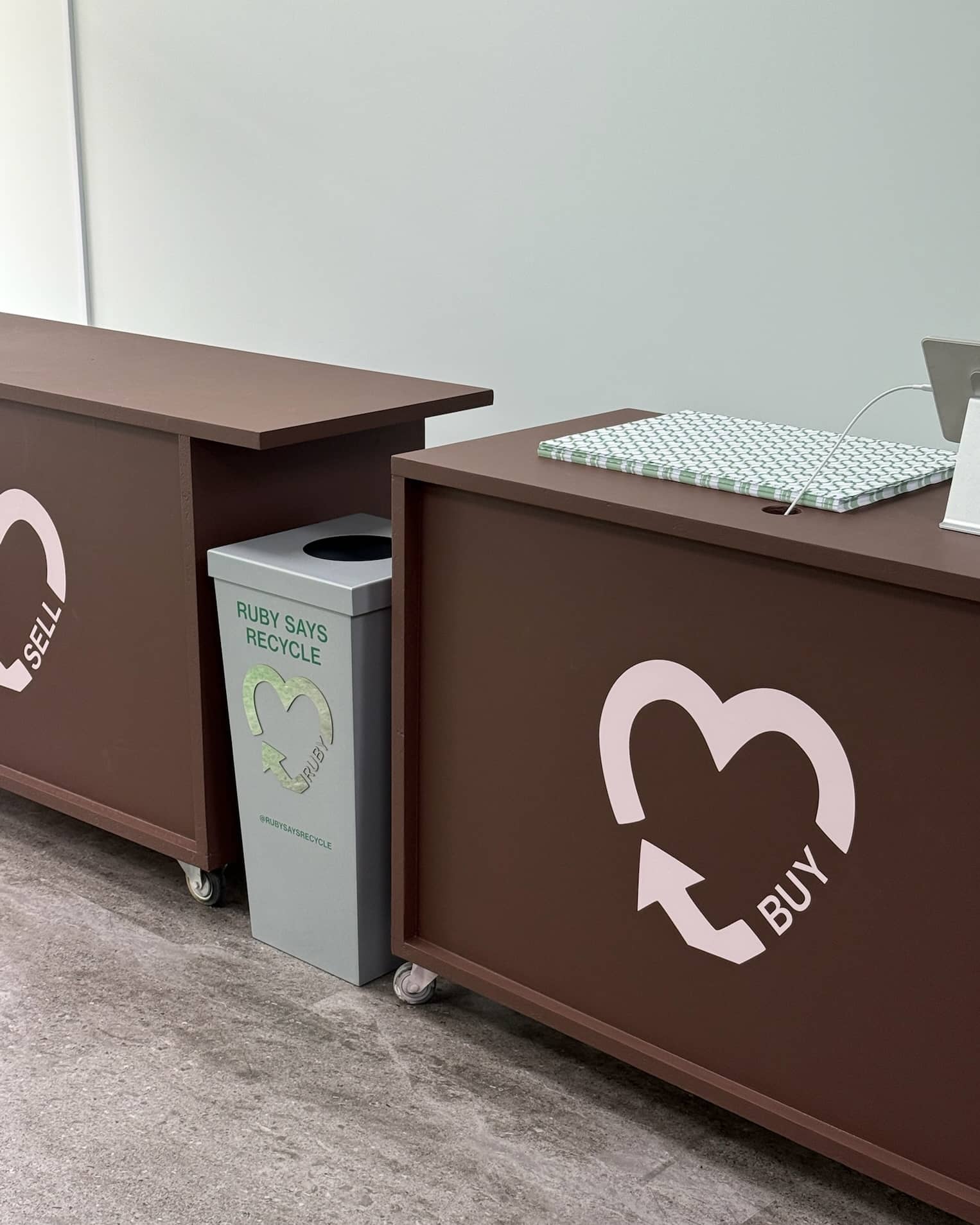
Circular fulfillment is the future of e-commerce, but educating customers about it is hard. Here's the challenge: most people don’t fully understand how it works, they’re sceptical of green claims, or they find the process too complex. Yet, with NZ$1.6 trillion in retail e-commerce sales expected by 2025, addressing this is crucial.
Key points you need to know:
- Low awareness: Many consumers don’t understand how circular systems reduce waste and emissions.
- Scepticism: Greenwashing fears make people doubt sustainability claims.
- Complexity: Reverse logistics and unclear programmes confuse customers.
Solutions that work:
- Clear messaging: Use visuals like infographics and videos to simplify concepts.
- Incentives: Offer NZ$ rewards, discounts, or gamified challenges to encourage participation.
- Technology: Use tools like AI and interactive platforms to personalise and simplify customer experiences.
For New Zealand, align with kaitiakitanga values, be transparent, and localise content with NZ$ pricing and Te Reo Māori elements. Educating customers isn’t just about sharing information - it’s about building trust and making circular practices easy to adopt.
Addressing Overconsumption through Consumer Education and Circular Business Models
Key Challenges in Customer Education
E-commerce brands face a tough hurdle: teaching shoppers about circular fulfilment. These challenges form barriers that stop consumers from fully adopting sustainable shopping habits, even when they show interest in making environmentally conscious choices. Breaking down these barriers is a vital step toward building a closed-loop economy, where informed customers play an active role in driving sustainable practices.
Challenge 1: Low Customer Awareness
A major obstacle lies in the lack of understanding around circular fulfilment. While 85% of consumers have shifted their buying habits towards sustainability [2], many still don’t fully grasp how their individual choices impact the environment or how circular systems actually work. For example, most people aren’t familiar with the complete lifecycle of a product or the benefits of ingredient transparency [1][3].
There’s also a generational gap here: 67% of Gen Z and 68% of millennials are highly concerned about brand emissions, compared to just 58% of Gen X and 57% of baby boomers [2]. This lack of awareness makes it harder to implement circular economy initiatives effectively [3]. To address this, brands need to focus on clear and straightforward communication strategies that resonate with all age groups.
Challenge 2: Customer Scepticism
Even when customers understand the basics of circular fulfilment, scepticism often gets in the way. The abundance of sustainability-related terms and labels can leave people feeling overwhelmed, unsure of what’s genuine and what’s just marketing fluff [4]. Social media has amplified this confusion, with consumer discussions about packaging waste spiking by 30% in the six months leading up to 30 May 2025 [4].
On top of that, cognitive biases and recycling misconceptions - like not knowing how to sort materials or interpret recycling symbols - add to the doubt [5]. Customers may also believe that participating in circular fulfilment programmes will cost them more time or money, further fuelling their scepticism.
"Consumers are increasingly concerned about the environment and packaging, but confusion and mistrust hinder progress." – Lena Gilchrist and Pippa Bailey, Ipsos Climate Change & Sustainability Practice, UK [4]
To overcome this, brands need to prioritise transparency and make their processes as simple as possible.
Challenge 3: Complex Processes
The complexity of circular fulfilment systems presents another significant challenge. Reverse logistics - where products are collected, sorted, repaired, and redistributed - can be hard for customers to understand or trust [6]. Inconsistent data and limited visibility into product lifecycles only add to the confusion [6]. Additionally, unpredictable forecasts make it difficult for brands to set clear expectations about returns and programme outcomes [6].
Recommerce policies often lack clarity, leaving customers unsure about return conditions, refurbishment processes, or resale criteria [7]. This is despite the fact that 74% of shoppers acknowledge that buying pre-loved items is a sustainable choice [7]. The issue becomes even more pressing as three-quarters of companies are expected to prioritise circular solutions by 2025 - a 40% jump in just three years [6]. Programs like Eileen Fisher’s Renew Programme, which has successfully reintroduced a large volume of garments into circulation, highlight the potential of these systems, but also the need for better communication [7].
Simplifying these processes and making them more transparent will be key to helping customers feel confident and engaged in circular fulfilment efforts.
Solutions for Better Customer Education
Now that we've pinpointed the key obstacles, let's dive into actionable strategies that e-commerce brands in New Zealand can use to better educate customers about circular fulfilment. These approaches tackle issues like low awareness, scepticism, and overly complex processes by presenting information in a way that's both engaging and easy to grasp.
Solution 1: Clear Messaging and Visual Content
For customer education to work, it needs to be straightforward. As the CEO of ReCircled puts it, "It can't be complicated for either the brand, retailer, or consumer" [9].
Visual storytelling is a great way to simplify complex ideas. Instead of lengthy explanations about how a product's lifecycle works, brands can use infographics to show the journey of an item - from purchase to return and renewal. Videos can also be incredibly effective, giving customers a behind-the-scenes look at repair processes or refurbished products.
Take Patagonia’s "Worn Wear" initiative, for example. Through thoughtful campaigns, they’ve highlighted the environmental benefits of repairing and reusing clothing rather than tossing it out. This not only strengthens their brand image but also builds customer loyalty [8].
The messaging itself should focus on concrete benefits rather than abstract ideas. Instead of vague claims about helping the environment, brands can highlight measurable outcomes that resonate with a wide audience. Being transparent about both the wins and the challenges in the circular fulfilment process fosters trust. People value honesty, and when they see the real impact, they’re more likely to engage. Pairing clear communication with tangible rewards can further encourage customer participation.
Solution 2: Customer Incentives
Sometimes, a little nudge is all it takes to move customers from interest to action. Financial incentives are a powerful motivator. Studies show that 68% of consumers are willing to pay more for sustainable products in at least one category, and 18% would pick eco-friendly options if they came with rewards like discounts [2]. This creates a clear opportunity for brands to design incentive programmes that work.
Personalised rewards - whether it’s discounts, gamified challenges, or even social recognition - can significantly boost engagement [10].
Well-crafted incentive programmes don’t just drive participation; they can also increase annual spending by 12–18% and improve brand recommendations by 117% [11]. Eileen Fisher’s Renew programme is a great example. Since its launch in 2009, it has collected over two million garments, proving that clear incentives can lead to meaningful participation [7]. For industries like electronics, appliances, and furniture, offering perks like free collection of used items can go a long way toward building loyalty [2]. Adding elements like gamification and community rewards taps into deeper motivations, making the experience rewarding beyond just financial benefits.
Solution 3: Technology Tools for Education
Technology plays a key role in simplifying customer education and bridging the gap between awareness and action. Modern tools can streamline processes, reduce manual work, and create a smoother experience for customers [12].
For instance, Almond Labs’ Roadmap provides a no-code Shopify toolkit that helps brands design engaging campaigns around circular fulfilment. It combines interactive content, loyalty programmes, and personalised customer journeys, making it easier for customers to learn while feeling motivated to engage.
For businesses launching buy-back or consignment programmes, Almond Labs’ Cassi platform simplifies the process. It offers clear buy-back value displays and streamlined consignment options, removing the complexity that often discourages participation. This platform gives brands full control while making the process transparent and straightforward for customers.
AI-powered personalisation takes things a step further by tailoring experiences to individual behaviours and preferences. It can adjust messaging, recommend relevant circular options, and deliver information that feels directly relevant to each customer.
sbb-itb-f46a14b
New Zealand Market Considerations
To succeed in the New Zealand market, it’s crucial to address local nuances and cultural values. New Zealand’s unique cultural landscape calls for customised approaches to educating consumers about circular fulfilment. Kiwi consumers bring distinct expectations and priorities, particularly when it comes to sustainability. Brands must understand these dynamics to build meaningful connections.
Community and Sustainability Focus
New Zealand’s cultural foundation provides a strong base for circular fulfilment education. The Māori principle of kaitiakitanga - the guardianship of the environment - embodies a deep sense of responsibility for caring for the planet. This value resonates across communities, offering a natural alignment with sustainability efforts [14][15]. However, Kiwi consumers are often sceptical of corporate sustainability claims.
"Many consumers want to know more, and we know they connect more with businesses when they tell consumers what they're doing. However, we also know fear of greenwashing is increasingly holding businesses back from taking their sustainability goals and achievements to the public – and there is good reason for that fear."
To overcome this scepticism, transparency is critical. Rather than making broad environmental claims, businesses should share specific details about their sustainability journey, including any challenges they’ve faced. Kiwi consumers are more likely to trust brands that position themselves as partners in the community, working together toward shared environmental goals [15].
Community-driven activities - like local workshops, repair cafés, and swap events - offer hands-on experiences that connect consumers with the practical benefits of a circular economy. These initiatives not only strengthen local identity but also reinforce the sustainable practices at the heart of circular fulfilment.
"Community clean-up events and workshops are totally essential, as they get people actively involved and spark a real sense of shared duty to our planet. We dive into activities like litter picking, chat up recycling tips, and break down sustainable living practices - really getting into the nitty-gritty."
- Virtual Audiences persona Mia 'Urban Activist' [15]
Local Metrics and Currency
Using local formats, such as NZ$ pricing and metric measurements, makes educational content more relatable and accessible for Kiwi consumers. With New Zealanders spending nearly $45 billion NZD in 2023, the market offers significant opportunities. However, with 95% feeling cautious about their financial outlook, businesses must clearly demonstrate the economic benefits of their initiatives alongside the environmental ones [16][17].
When communicating buy-back programmes, trade-in credits, or savings, it’s important to use NZ$ amounts and address local GST (15%) [16]. Payment preferences also matter: 84% of New Zealanders use contactless payments, 77% favour debit or credit cards, and 20% of those under 34 use mobile payment options [16]. Additionally, 95% of consumers are open to joining new rewards programmes, provided they see a clear value exchange. Linking circular programmes with NZ$ rewards can strengthen engagement [17].
Cultural sensitivity is another essential factor. Simple gestures, like incorporating Te Reo Māori elements into communications, can significantly enhance customer loyalty and demonstrate respect for New Zealand’s heritage [16].
"Businesses have a critical role to play in supporting consumers to make better purchasing decisions, not only by striving to provide more sustainable products and services, but also (and arguably more importantly) by aligning their whole business purpose with a more sustainable long-term model."
- Jay Crangle, SBC's Head of ESG [13]
Conclusion
Helping customers understand circular fulfilment involves tackling three main hurdles: low awareness, scepticism, and complex processes. The key lies in breaking down complex ideas with visual content, offering meaningful incentives, and using technology to make circular practices easy and appealing.
The numbers back this up: 71% of consumers aged 25 to 34 say sustainability matters to them, and 74% of shoppers recognise that buying pre-loved items is inherently sustainable. This shows both the demand for and the potential of circular products [7].
But success isn’t just about sharing information - it’s about changing perspectives. As the Sustainability Directory puts it:
"Consumer education in the circular economy context is a transformative process, aiming to shift mindsets, values, and behaviours towards sustainable consumption and active participation in circular systems" [18].
For New Zealand businesses, this shift must reflect local values like kaitiakitanga while addressing practical concerns, such as pricing in NZ$ and GST transparency. Building trust through honesty about sustainability efforts is crucial.
Technology plays a major role here, helping brands scale education and engagement. Tools like Almond Labs’ Roadmap make it easier to create loyalty programmes and educational campaigns, while Cassi’s buy-back platform shows customers how circular practices work in action. These solutions enable brands to deliver personalised, data-driven experiences that today’s consumers expect, while reinforcing the transparency that Kiwis value.
The circular economy isn’t just good for the planet - it’s a smart business move. By addressing awareness, scepticism, and complexity, brands can turn these challenges into opportunities. Educating consumers empowers them to make informed decisions, driving demand for circular products and paving the way for a thriving circular economy [18].
FAQs
How can e-commerce brands educate customers on the benefits of circular fulfilment effectively?
Educating Customers About Circular Fulfilment
E-commerce brands have a unique opportunity to inform their customers about circular fulfilment through clear communication and meaningful engagement. Start by breaking down what circular fulfilment means and why it’s important. Highlight the positive impact it has on the environment and how it aligns with the growing demand for more sustainable shopping practices.
To get the message across effectively, use channels your audience already engages with, like social media, blogs, and email newsletters. Keep the content relatable and easy to understand, ensuring it connects with the values and interests of your customers.
Interactive experiences can also help bring circular fulfilment to life. Tools like quizzes or workshops provide a fun and hands-on way for customers to learn about these practices. On top of that, offering incentives - such as discounts for returning products for recycling or repair - can motivate customers to take part.
When you make the process straightforward, rewarding, and transparent, you not only educate your audience but also inspire them to adopt circular practices in their daily lives.
What are some common misunderstandings about circular fulfilment, and how can brands help clarify them?
Many people misunderstand what circular fulfilment really means. Some think it’s just another term for recycling or something individuals can achieve on their own. Others assume circular practices are already common and effective, when in reality, achieving true circularity requires system-wide changes that go beyond individual efforts. There’s also a tendency to trust all brands claiming to be circular, without recognising that not all of them fully embrace circular principles.
To clear up these misconceptions, brands need to prioritise clear and honest communication. They should explain the difference between recycling and circularity, highlight the full lifecycle of their products, and back up their claims with evidence of sustainable practices. Educational campaigns can also play a big role in engaging consumers and helping them grasp what circular fulfilment really entails - and why it’s so crucial for building a more sustainable future.
How can New Zealand businesses integrate cultural values into circular fulfilment education?
New Zealand businesses have a unique opportunity to weave local cultural values into their circular fulfilment education by embracing Kaitiakitanga (guardianship) and Manaakitanga (hospitality and respect) - two guiding principles of Māori culture.
Kaitiakitanga is all about sustainable resource management. Businesses can use this principle to educate customers on the importance of protecting the environment for future generations. This could mean adopting clear messaging and practices that emphasise environmental care and responsibility, inspiring customers to make eco-friendly choices.
On the other hand, Manaakitanga prioritises creating a welcoming and respectful experience. By focusing on community-driven initiatives, businesses can encourage shared responsibility for sustainability. These efforts not only build stronger connections with customers but also nurture loyalty by showing genuine care for people and the planet.
Incorporating these values into business strategies not only deepens customer engagement but also pays tribute to New Zealand’s rich cultural heritage.
Heading 1
Heading 2
Heading 3
Heading 4
Heading 5
Heading 6
Lorem ipsum dolor sit amet, consectetur adipiscing elit, sed do eiusmod tempor incididunt ut labore et dolore magna aliqua. Ut enim ad minim veniam, quis nostrud exercitation ullamco laboris nisi ut aliquip ex ea commodo consequat. Duis aute irure dolor in reprehenderit in voluptate velit esse cillum dolore eu fugiat nulla pariatur.
Block quote
Ordered list
- Item 1
- Item 2
- Item 3
Unordered list
- Item A
- Item B
- Item C
Bold text
Emphasis
Superscript
Subscript




